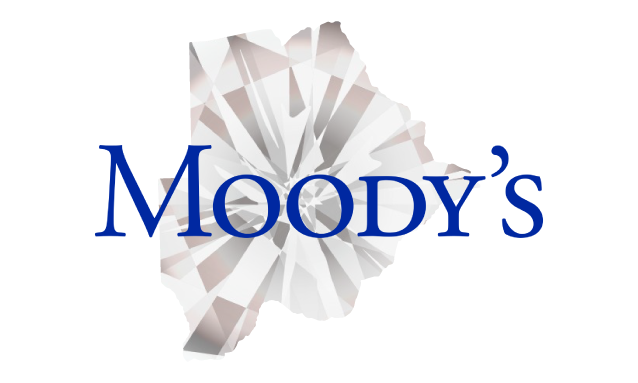
5 April 2025
Moody’s Ratings has changed the outlook on the Government of Botswana to negative from stable and affirmed the local and foreign currency long-term issuer ratings at A3. The outlook change to negative reflects increasing risks to Botswana’s credit profile due to a prolonged downturn in the diamond industry, a key pillar of the economy, according to the global rating agency.
“This downturn will affect government revenue and deplete fiscal buffers, leading to a rapid increase in government debt and a weakening of debt affordability.
“In response, we expect the government to implement fiscal consolidation measures and improve its access to borrowing by better leveraging the large pool of domestic savings in Botswana,” the rating note said.
Moody’s said past attempts by the authorities to diversify the economy and revenue base have yielded mixed results. Any delay in their policy response risks continuous debt increases in the years to come.
The affirmation of the A3 ratings is supported by Botswana’s still moderate debt burden and strong debt affordability, as well as low susceptibility to event risks.
Domestic political and geopolitical risks are very low, as demonstrated by the peaceful power transition following the 2024 election, the first transition in Botswana’s history.
High domestic savings provide the government with sufficient financing options to limit the deterioration in debt affordability even as the debt rises, subject to the authorities’ ability to foster the rapid development of the untapped domestic investor base and a robust government debt market. Botswana’s local currency (LC) and foreign currency (FC) country ceilings remain unchanged at Aa3 and A1, respectively, according to the rating note. The three-notch LC ceiling gap to the sovereign rating reflects predictable institutions and government actions, low political risk and external imbalances against the government’s significant footprint in the economy and reliance on a single revenue source.
The one-notch gap between the FC ceiling and the LC ceiling reflects moderate policy effectiveness and low external indebtedness that point to limited transfer and convertibility risks. The prolonged downturn in the diamond sector is exerting pressure on Botswana’s economic growth prospects, exports and government revenues.
Demand for polished diamonds remains subdued due to slowing global demand and changing consumer preferences, while structural shifts, including the growing popularity of lab-grown diamonds, are likely to continue to erode the industry’s long-term profitability and its contribution to the economy and government finances. Despite Botswana’s history of managing diamond sector volatility, the government has nearly depleted its fiscal reserves, making the credit profile more vulnerable to ongoing weakness in the diamond sector.
“We expect large fiscal deficits to persist due to the decline in mineral revenue, mainly from diamonds. The fiscal deficit widened to an estimated 9.0% of GDP in the fiscal year ending March 31, 2025 (fiscal 2024/2025), from 4.3% of GDP in the prior year.”
Moody’s said the deterioration in the fiscal deficit was driven by a decline in mineral revenue to 3.2% of GDP, compared to 9.3% of GDP in the prior year.
“We expect ongoing weakness in the diamond sector, and subdued mineral revenue, will keep the deficit around 9% of GDP in 2025/26, before narrowing as the government implements a fiscal consolidation plan.
As a result, we forecast the government debt burden to increase to 40% of GDP at the end of 2025/26 from 27% at the end of 2024”.
In the absence of a fiscal buffer, the government intends to rely on a combination of domestic and external financing sources to meet its gross financing needs, which ratings analysts estimate at 13.4% of GDP in 2025/26. However, the government’s limited track record in mobilising large-scale financing from domestic or external sources increases risks to the government’s liquidity and debt affordability.
“We also see risks to the timely and adequate disbursement of concessional external financing for general budget purposes, as this financing often involves long timelines before disbursement and restrictions on how funds can be used.”
Any shortfalls in external concessional financing, along with potential constraints in scaling up domestic financing, would likely increase the government’s reliance on external commercial borrowing.
This shift in financing would contribute to a more rapid deterioration in Botswana’s debt affordability than currently envisioned. We expect the interest-to-revenue ratio to increase to 4.2% in 2025/26, up from just 2.2% in 2022/23 and 4.0% in 2024/2025.
Moody’s said the affirmation of the A3 rating is supported by Botswana’s credit strengths, including its still moderate debt burden and its track record of managing economic and fiscal shocks.
At 27% of GDP at the end of 2024, Botswana’s debt burden remains lower than most other A3-rated peers. The peaceful transition of power following the October 2024 election reinforces confidence in the country’s governance and political institutions.
The current government has the mandate and political capital to implement fiscal consolidation measures, including a reduction in development spending as well as controlling growth in the wage bill and rationalising transfers to state-owned enterprises. The government also has space to increase tax revenues to levels closer to regional peers. These measures could support a stronger-than-expected fiscal consolidation and help stabilise Botswana’s debt burden.
Furthermore, the administration has committed to implementing economic reforms to reduce reliance on the volatile diamond sector and support private sector-led growth, raising the possibility of lower deficits and stronger long-term growth potential than expected.
Botswana’s credit profile also benefits from low susceptibility to event risks. Geopolitical risks are very low relative to A3-rated peers, and foreign exchange reserves, while declining, remain sufficient to meet the government’s very low external debt service obligations and support the foreign exchange regime.
Botswana’s sizeable positive net international investment position reflects high domestic savings, which have been invested abroad, mitigating external vulnerability risk.
#Moody’s Affirms Botswana A3 Ratings, Downgrades Outlook NGX Gains Weight as Investors Wealth Rises by N120bn
Source: https://rb.gy/w4vvhk



